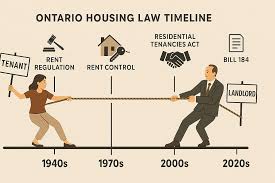Over the past decade, major Canadian cities such as Toronto, Vancouver, Montreal, Calgary, and Ottawa have made significant investments in cycling infrastructure. The expansion of bike lanes—once limited to a few urban corridors—has now become a defining feature of modern city planning. Advocates argue that this shift represents a positive move toward sustainability, public health, and urban livability. However, critics note that these changes often come at the expense of car drivers, whose commuting experience can worsen as road space becomes more restricted. The issue remains complex, balancing environmental, social, and economic considerations.
In terms of pros, at the top of the list we definitely have to include the environmental benefits. One of the most compelling arguments for expanding bike lanes is the environmental impact. Transportation is a major source of greenhouse gas (GHG) emissions in Canada, accounting for roughly one-quarter of the nation’s total. By encouraging more people to cycle instead of drive, cities can significantly reduce carbon emissions. Bicycles produce zero emissions, consume no fossil fuels, and require minimal resources to manufacture compared to cars.
In cities like Vancouver and Montreal, the introduction of protected cycling routes has been associated with measurable declines in car use for short-distance travel. A 2022 report by the City of Vancouver noted that cycling trips had increased by nearly 30% since 2016, contributing to lower overall vehicle emissions in the downtown core. As urban populations grow, increasing the share of low-emission transport modes is essential for meeting Canada’s climate targets and improving urban air quality.
Moreover, fewer cars on the road mean less air pollution. Fine particulate matter (PM2.5) and nitrogen dioxide—common by-products of car exhaust—are linked to respiratory and cardiovascular illnesses. By promoting cycling, cities can create cleaner, healthier air for all residents, not just cyclists.
Another pro relates to improved public health. Cycling offers direct health benefits by integrating physical activity into daily routines. Unlike gym workouts, cycling provides a practical and sustainable form of exercise that people can fit into their commute. Regular cycling reduces the risk of obesity, diabetes, and heart disease while improving mental well-being through exposure to outdoor environments.
Cities that invest in safe, connected bike networks encourage more people to ride, particularly women, older adults, and families who might otherwise view urban cycling as unsafe. The presence of separated bike lanes increases safety by reducing conflicts between cyclists and motor vehicles. According to a study by the University of British Columbia, cities with protected lanes experience up to 90% fewer cyclist injuries compared to those with painted lanes or shared roadways.
In the long term, healthier citizens mean reduced healthcare costs and a more active, engaged population—a clear societal gain.
Another pro includes the economic and urban livability benefits. Bike lanes also offer substantial economic and urban design advantages. Cyclists tend to shop locally more often than drivers, spending smaller amounts per visit but doing so more frequently. This pattern supports small businesses and contributes to vibrant, pedestrian-friendly neighborhoods.
Additionally, bike lanes make streets quieter, safer, and more appealing to walk or live along. They contribute to urban revitalization and can increase property values in areas with strong cycling infrastructure. Cities like Montreal and Ottawa have seen rising demand for housing near popular cycling corridors.
From a municipal perspective, bike infrastructure is also cost-effective. Building and maintaining bike lanes is far cheaper than constructing new car lanes or parking structures. As cities face growing financial and environmental pressures, investing in cycling networks offers a relatively low-cost way to improve mobility.
As for the cons of increased bike lanes the first point to mention is the reduced road space and traffic congestion for drivers. The most common criticism of bike lane expansion comes from car drivers who feel their mobility has been restricted. Many urban streets are already congested, and reallocating lanes for bicycles can exacerbate traffic delays, particularly during rush hours.
In cities like Toronto, the introduction of dedicated cycling lanes on major routes such as Bloor Street and Yonge Street sparked heated debate. Some business owners and commuters argued that the reduction of vehicle lanes worsened traffic bottlenecks, increased travel times, and made deliveries more difficult. While data often show that these effects are temporary—drivers eventually adjust routes or modes of travel—the transition period can be frustrating and politically contentious.
Furthermore, not all neighborhoods have adequate cycling demand to justify lane reductions, especially in suburban areas where commuting distances are long and public transit options are limited.
Another con associated to bike lanes includes parking and accessibility issues. Increased bike lanes often mean a loss of on-street parking, which can create challenges for local businesses, delivery vehicles, and people with mobility impairments. For many downtown merchants, convenient parking is essential for attracting customers who drive from other parts of the city. Removing parking spaces can reduce accessibility and convenience, potentially harming retail revenue.
Cities have attempted to balance these competing needs by introducing loading zones and side-street parking, but these solutions are not always sufficient or well-enforced. The tension between accessibility and sustainability remains a core challenge in implementing bike-friendly infrastructure.
Another con includes seasonal and equity limitations. Canada’s harsh winters present another obstacle. Cycling infrastructure often goes underused for several months of the year, raising questions about cost-effectiveness. Although winter cycling is growing in popularity, particularly in cities like Calgary and Montreal that maintain snow-cleared bike routes, participation remains relatively low compared to warmer seasons.
There are also equity concerns. While central urban neighborhoods benefit from new bike lanes, many lower-income or suburban residents live too far from downtown to use them. If cities prioritize cycling at the expense of improving public transit, they risk creating transportation systems that primarily serve younger, more affluent residents who can afford to live close to the urban core.
Essentially, the expansion of bike lanes in major Canadian cities represents a significant step toward a more sustainable, health-conscious, and livable urban future. The environmental and health benefits are undeniable: fewer emissions, cleaner air, and more active lifestyles. Economically, cycling infrastructure supports local businesses and revitalizes city neighborhoods.
However, these benefits come with trade-offs. Car drivers face increased congestion, reduced parking, and potential inconvenience, while some communities may feel excluded from the cycling boom. To maximize benefits, cities must pursue balanced, data-driven planning that integrates cycling with efficient public transit, equitable access, and flexible urban design.
Ultimately, the debate over bike lanes is not about bikes versus cars—it is about how Canadian cities choose to share limited urban space in the pursuit of a cleaner, healthier, and more inclusive future.
Search
Categories
Recent posts
Tags
- a louer
- affordable apartments Toronto
- affordable housing
- affordable housing solutions Canada
- Air Filters
- air quality
- apartment
- apartment close to public transport
- apartment for rent
- apartment for rent montreal
- apartment for rent Toronto
- apartment insurance
- appartement
- appliances
- ARTICLE
- available for rent
- background check
- bacteria
- best city to live in canada
- best healthcare
- bicycle
- bicycle path
- bike lane
- bike path
- bikes
- bill 16
- burglar
- buy a house
- buying a house
- carbon monoxide detector
- cars
- centris
- city
- cleaning
- cleaning products
- cleaning wood floors
- closet
- closet space
- clothing organizer
- compact rental units
- condo
- condo association laws
- condo fees
- condo for rent
- condo insurance
- construction budget
- construction contractors
- construction cost
- credit check
- decorating room
- digital transaction
- door lock
- doors
- downtown micro apartments
- electricity
- employment verification
- energy consumption
- energy cost
- energy saving
- engineered hardwood
- fire alarm
- fire detector
- fire extinguisher
- floor
- flooring
- for rent
- For rent in Montreal
- For rent in Toronto
- For rent in Vancouver
- for sale
- furniture
- gas
- healthy candles
- healthy lifestyle
- home
- house
- house for rent
- house for sale
- house garden
- house insurance
- house locks
- house plants
- immigrant
- importance of water leak detector
- indoor plants
- insurance
- intergenerational home
- intergenerational living
- interior designer
- investment
- landlord
- lease
- lease responsibility
- long term care facility
- low crime
- mattress
- micro-apartments Vancouver
- micro-units Toronto
- mls
- move to canada
- moving company
- Moving to canada
- moving truck
- multigenerational home
- multiplex
- nano-suites
- nano-suites Toronto
- new apartment
- new color
- oil
- old age home
- online house purchase
- Ontario
- paint colors
- passive income
- pet friendly apartment
- pet friendly plants
- planning for vacation
- plants
- porcelain tile
- property
- questions for apartment rental
- real estate
- real estate agent
- real estate broker
- real estate online
- real estate transaction
- realtor
- renal history
- rent
- rent an apartment
- rent control
- rent obligations
- rental
- rental board
- rental scam
- renting
- residential income
- residential lease
- residential rental
- revenue property
- safe area
- safe candle in apartment
- safe candle in house
- safe candles
- safety
- scam
- security
- sell a house
- seniors residence
- small apartments Vancouver
- smoke detector
- social media and real estate
- soy candle
- soy candles made with essential oils
- storage space
- student apartment
- student housing
- tenant
- tiny rentals Canada
- traffic
- trending color
- trending paint
- university student rental
- ventilation
- vinyl floor
- water alarm
- water damage
- water leak detector
- window frame
- window manufacturer
- windows
- wood floors



